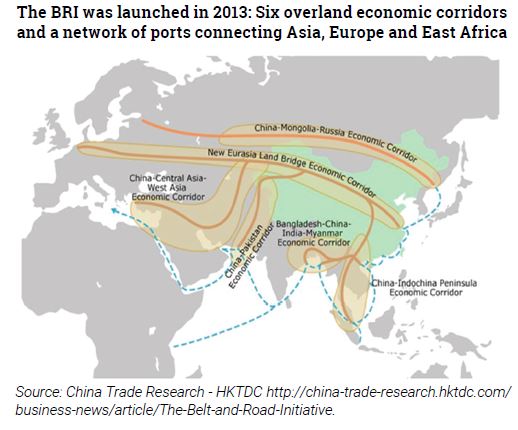Trésor-Economics No. 229 - The New Silk Road
Chinese President Xi Jinping's signature "One Belt, One Road" policy, also known as the "Belt and Road Initiative" (BRI) or the "New Silk Road", was officially launched in 2013. The initiative has now become a cornerstone of the economic development and trade strategy of the world's second-largest economy.
The BRI seeks to provide a response to the infrastructure needs of more than 60 developing countries, located mainly in Eurasia. It is one of the pillars of the "community with shared future for mankind", which the Communist Party of China (CPC) vowed to build at the 19th National Party Congress in October 2017. The initial aim is to harness China's financial power and industrial capacity to embark on a programme of building and operating infrastructure such as ports, roads, railways, energy systems, industry and telecommunications networks across the entire Eurasian continent and further afield in Africa, South America and even the Arctic.
Pragmatic and versatile in practice, the BRI is a comprehensive strategy designed to reduce China's geopolitical vulnerability, increase its ability to project its power, especially its economic power, help upgrade its industry and promote a new world order "with Chinese characteristics".
Implementing the BRI raises several questions about its impact on the economic development and stability of BRI countries and the extent to which European companies can participate in the initiative. This will largely depend on the degree of openness and transparency of China's strategy.
The response of the European Union and the French government reflects these challenges and underlines the importance for China to participate fully in multilateral institutions now that its economy is becoming increasingly globalised and it is playing a greater role in global economic governance and financing. Their response also highlights the need for a holistic approach to developing connectivity initiatives between Asia and Europe.
